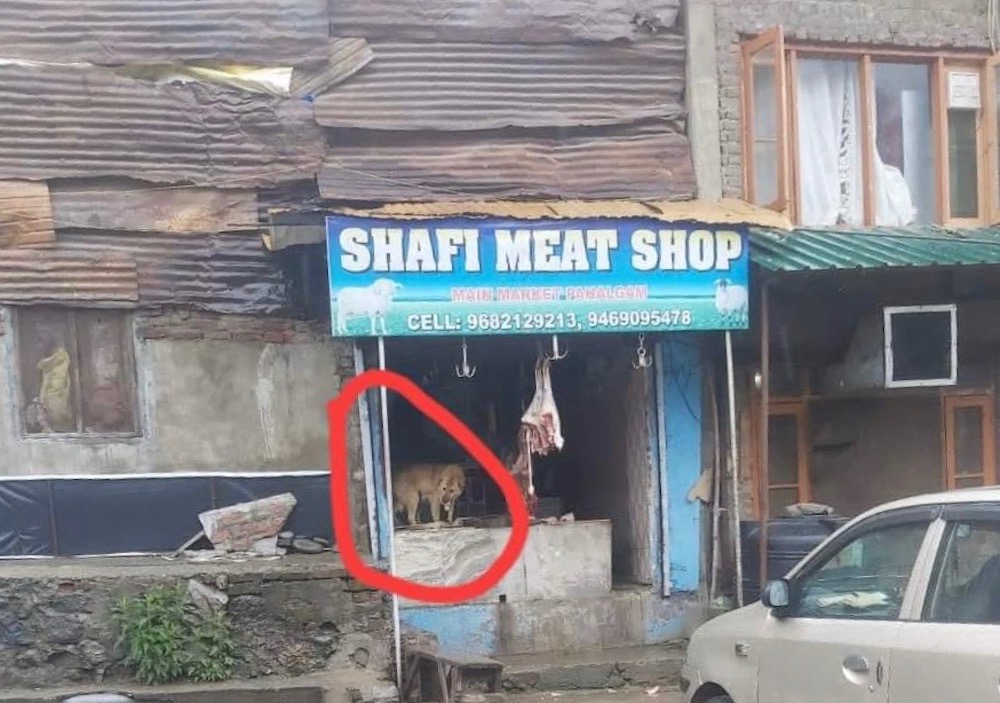Permitting demand-supply to decide pricing in Rs 15000 crore livestock sector is a good intervention. However, unregulated pricing in imperfect markets having regulated supply does not suit the idea. Now, voices are expected to emerge that if the butcher decides the mutton price, why cannot teachers enjoy the same right, writes Masood Hussain

When the government announced the annulling of the Jammu and Kashmir Mutton (Licensing and Control) Order of December 12, 1973, it was something incredible in the Wazwaan Valley. Done, apparently on the advice of the Government of India, the government has directed Food, Civil Supplies, and Consumer Affairs department to “refrain from issuing or enforcing any order”.
Under SRO 646 of 1973, the government had taken over the regulation of the prices of livestock (SO 145E) since February 15, 1990.
The livestock trade is expected to function as a free market commodity in which pricing will be based on demand-supply mechanisms, as is the case worldwide. Pricing usually gets fixed on a set of variables including the production cost, utility and demand, competition, marketing methods and pricing objectives.
Practically, the decision has a strong positive and negative side, especially for a market that traditionally operates like a greenhouse. There is a strong possibility of price rationalising if the stakeholders decide to play fairly and permit competition in the market. On the flip side, the livestock sector has the potential of becoming a new goldmine as the entire sector is managed by not more than 200 people. They can well operate like a cartel.
A Vast Sector
The government, in fact, has moved out of the livestock sector regulation completely. Mutton is just one item in the huge livestock basket that cumulative is more than Rs 15000 crore business in Jammu and Kashmir.
Early January 2018, the government told the last session of the assembly that the erstwhile state of Jammu and Kashmir consumed 250.60 crore litres of milk in 2015-16, which means a turnover of Rs 7518 crore at the selling price of Rs 30, a litre. In 2022, the new agriculture policy suggested the diary sector is at Rs 9000 crore and grows at an insignificant 3.5 per cent a year.
In 2016-17, Jammu and Kashmir consumed 47.17 crore kilograms of mutton, which (at Rs 400 a kilogram) meant a turnover of Rs 1908.68 crore. In 2022, the government policy put the sector at a conservative Rs 1920 crore, insisting it grows by a modest three per cent and the deficit is 41 per cent which leads to an import order of Rs 1400 crore. Even at the 2016 level of consumption, the mutton market is Rs 3000 crore strong at current prices.

By March 2017, Jammu and Kashmir had consumed nearly 121 crore eggs in the financial year, a turnover of Rs 600 crore. The same year, 740 lakh kilograms of poultry was consumed by the erstwhile state, which translates into a turnover of Rs 1000 crore. In 2022, the government agriculture policy put the poultry sector at Rs 709 crore with a 7.5 per cent yearly growth. How it was calculated remains not known. The policy, however, said Jammu and Kashmir has an 80 per cent deficit in eggs and 50 per cent in poultry meat, which triggers a capital flight of Rs 1273 crore, a year.
This excludes beef which is hugely consumed in the periphery and is no less than mutton. Besides, there are various by-products within the livestock sector that have remained off the purview of policymakers.
Mutton Politics
The mutton business in Kashmir has had too much political intervention. The livestock importers, the Kothdars and the retailers, the Puj, had strong political connections. The government takeover of the regulation prevented “unwanted infiltration” into the sector. For a very long time now, there has not been any new licence issued for importers or retailers, especially in the city that exclusively feeds on mutton, unlike the periphery where the mutton-beef mix is the norm.
So the entire mutton sector, for instance, is with a class that controls the bulk import and the retail. The question remains: how will the government’s initiative benefit the end-user when unregulated pricing will depend on regulated supply? Ideally, the government must come out of every facet of this business. Perfect pricing in imperfect markets is dystopian and can backfire.

Over the years, mutton costs have been a perpetual debate. It has led to serious tensions between the government and the mutton traders. While the government in the early 1990s invoked the Jammu and Kashmir Public Safety Act to stabilise the prices, even recently the government resorted to sealing of the shops for the same purpose. In the coming days, the possibility of a much more serious situation can emerge if the policymakers do not create an enabling and transparent mechanism that will decide the price.
Move On
Ideally, the government in the twenty-first century lack a reason to be in business. They are supposed to be enablers and oversee the price equilibrium does not deviate from the mean and is not in collision with the laid out regulatory system. In certain cases, when the government sees the user is hit, they intervene with subventions to improve the situation.
The government has created a model intervention by surrendering its price-setter status. It has been done in essential commodities. This can become a model in other sectors falling in the welfare part of life. Basic education is not so less essential with avowed emphasis on universal education. In the coming days this question will be more audible in Srinagar – if the government trusts the butcher to fix the mutton price, why can not a teacher enjoy the same right? Why there is a maze of regulatory systems in place to control English-teaching private schools when the government’s own school set-up is in dire straits? A demand-supply system must be permitted in education too.















